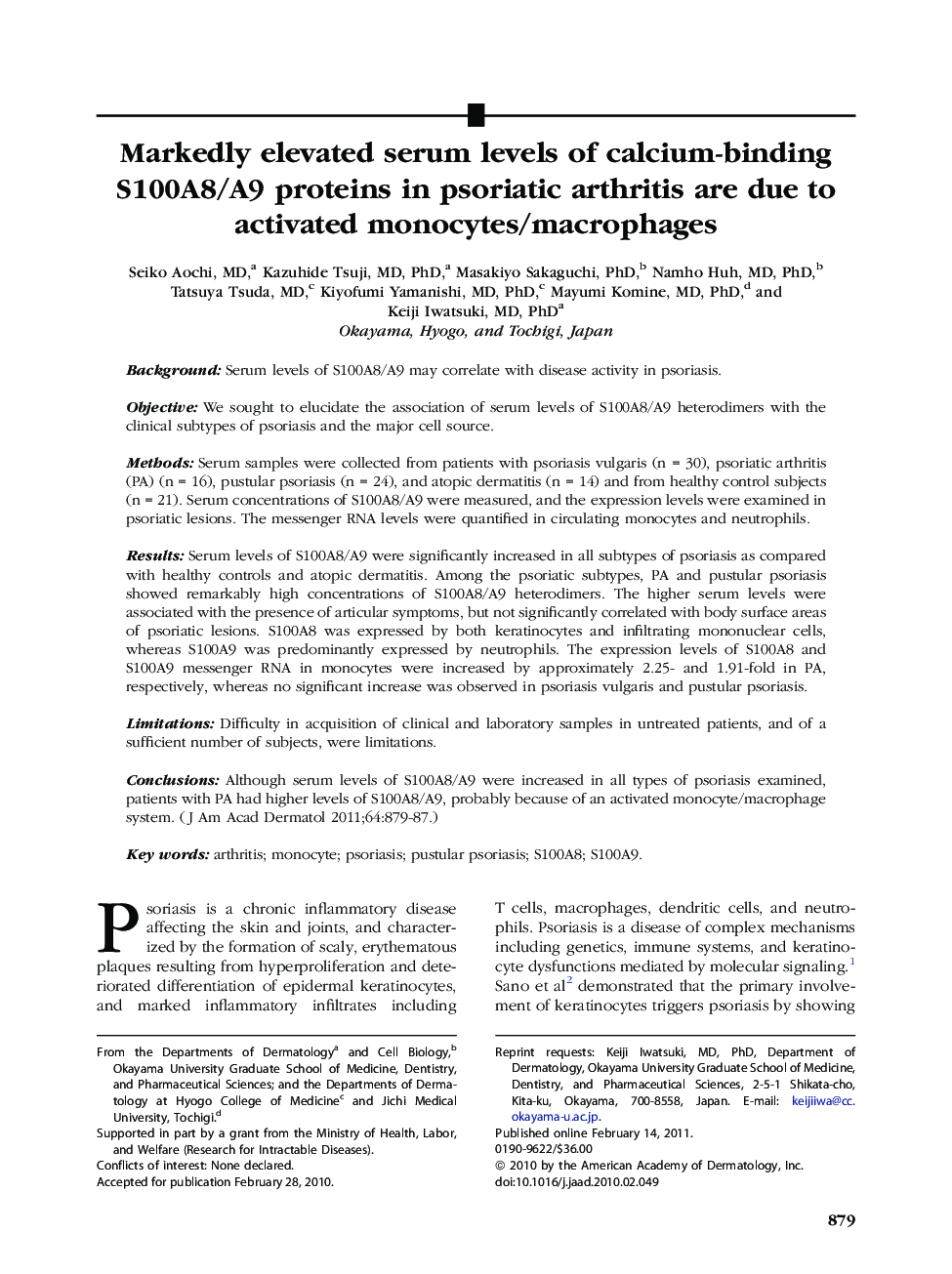| Article ID | Journal | Published Year | Pages | File Type |
|---|---|---|---|---|
| 3207126 | Journal of the American Academy of Dermatology | 2011 | 9 Pages |
BackgroundSerum levels of S100A8/A9 may correlate with disease activity in psoriasis.ObjectiveWe sought to elucidate the association of serum levels of S100A8/A9 heterodimers with the clinical subtypes of psoriasis and the major cell source.MethodsSerum samples were collected from patients with psoriasis vulgaris (n = 30), psoriatic arthritis (PA) (n = 16), pustular psoriasis (n = 24), and atopic dermatitis (n = 14) and from healthy control subjects (n = 21). Serum concentrations of S100A8/A9 were measured, and the expression levels were examined in psoriatic lesions. The messenger RNA levels were quantified in circulating monocytes and neutrophils.ResultsSerum levels of S100A8/A9 were significantly increased in all subtypes of psoriasis as compared with healthy controls and atopic dermatitis. Among the psoriatic subtypes, PA and pustular psoriasis showed remarkably high concentrations of S100A8/A9 heterodimers. The higher serum levels were associated with the presence of articular symptoms, but not significantly correlated with body surface areas of psoriatic lesions. S100A8 was expressed by both keratinocytes and infiltrating mononuclear cells, whereas S100A9 was predominantly expressed by neutrophils. The expression levels of S100A8 and S100A9 messenger RNA in monocytes were increased by approximately 2.25- and 1.91-fold in PA, respectively, whereas no significant increase was observed in psoriasis vulgaris and pustular psoriasis.LimitationsDifficulty in acquisition of clinical and laboratory samples in untreated patients, and of a sufficient number of subjects, were limitations.ConclusionsAlthough serum levels of S100A8/A9 were increased in all types of psoriasis examined, patients with PA had higher levels of S100A8/A9, probably because of an activated monocyte/macrophage system.
